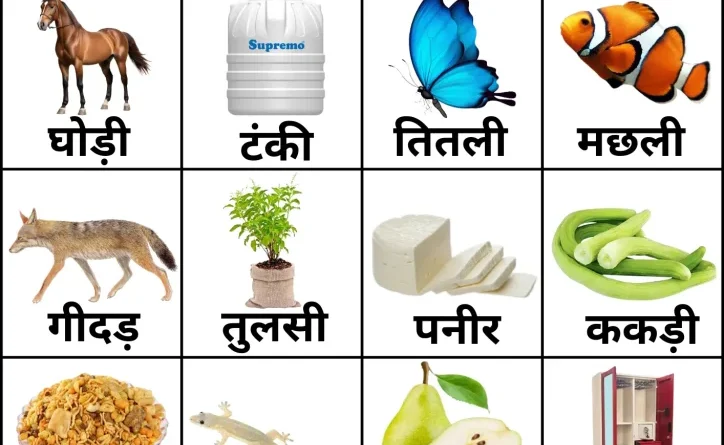Badi Ee Ki Matra Wale Shabd Words with the Long Ee Sound in Hindi
Introduction
Hindi, as a language, is deeply rooted in phonetic and syllabic structures. Understanding the matras (vowel signs) used in Hindi is essential to mastering the language. One such vital matra is the “Badi Ee Ki Matra,” which represents the elongated “ee” sound (as in the English word “tree”). This article delves into what the “Badi Ee Ki Matra” entails, its significance, usage, and common words associated with it.
What Are Matras in Hindi?
In Hindi, matras are symbols used with consonants to indicate vowel sounds. Hindi is known for its phonetic consistency, where each vowel and consonant has a unique sound. Matras, like Badi Ee Ki Matra (ई), help to elongate the sound of words, thus giving them distinct meanings.
Understanding the “Badi Ee” Sound in Hindi
The “Badi Ee Ki Matra” is used to represent a long “ee” sound, shown as “ई” in Devanagari script. For instance, the word “तीन” (teen, meaning “three”) uses the Badi Ee Ki Matra, giving it a lengthened vowel sound compared to words with a short “ee” sound.
Importance of Learning “Badi Ee Ki Matra Wale Shabd”
Knowing words with the Badi Ee Ki Matra enables speakers to pronounce words accurately and convey correct meanings. This skill is particularly valuable for students, language learners, and those interested in becoming fluent in Hindi.
How “Badi Ee Ki Matra” Changes Word Meanings
In Hindi, even a small change in matra can alter the meaning of a word. For example:
- “बिल” (bil) means “hole” or “bill” in English.
- “बील” (beel), with the Badi Ee Ki Matra, means “swamp.”
Common Examples of “Badi Ee Ki Matra Wale Shabd”
Let’s look at some common words with the Badi Ee Ki Matra and see how they fit into different categories:
- तीर (teer) – arrow
- भी (bhi) – also
- पी (pee) – to drink
- नदी (nadee) – river
- सीता (Seeta) – a common Indian name
- लीला (leela) – play or divine act
Usage of “Badi Ee Ki Matra” in Everyday Language
Words containing Badi Ee Ki Matra are found throughout Hindi conversations, from daily vocabulary to formal writing. Its use is especially prominent in names, verbs, and adjectives.
Grammatical Rules Associated with Badi Ee Matra
Understanding the placement and correct usage of Badi Ee Ki Matra is crucial:
- Generally, Badi Ee Ki Matra is placed to the left of the consonant it modifies, like in “नील” (neel – blue).
- In some cases, like when combined with conjunct consonants, the placement may vary to maintain readability.
Difference Between “Badi Ee” and “Chhoti Ee”
The Badi Ee (ई) has a longer, stretched sound, while Chhoti Ee (इ) is short and quick. Misusing them can lead to misunderstandings, as seen in pairs like:
- बिल (bil – hole) vs. बील (beel – swamp)
Teaching “Badi Ee Ki Matra” to Young Learners
For children, learning through interactive methods like songs, flashcards, and stories can make understanding Badi Ee Ki Matra enjoyable. Teachers often use repetition and contextual examples to reinforce the learning.
Practice Exercises to Strengthen Knowledge
Practicing “Badi Ee Ki Matra Wale Shabd” can include:
- Writing Exercises – Copying words and sentences to familiarize with the matra.
- Reading Aloud – Improves pronunciation and fluency.
- Matching Exercises – Matching words with pictures to understand meaning.
Common Mistakes and Tips to Avoid Them
Many beginners struggle to distinguish between Badi Ee and Chhoti Ee sounds. A useful tip is to practice words in pairs, paying attention to the elongated sound in Badi Ee words.
Using Badi Ee Matra in Sentence Formation
Here are some examples to illustrate Badi Ee Matra in sentences:
- राम ने नदी में तैरना सीखा।
(Ram learned to swim in the river.) - सीता को पीला फूल पसंद है।
(Seeta likes the yellow flower.)
Impact of Correct Pronunciation in Hindi Language
Proper pronunciation enhances communication clarity and fosters a stronger command of the language. Knowing the correct matra helps in both writing and speaking, minimizing misunderstandings.
Conclusion
Mastering Badi Ee Ki Matra Wale Shabd plays a crucial role in achieving fluency in Hindi. Whether you’re learning for academic, professional, or personal reasons, understanding and using this matra accurately will significantly improve your language skills.
FAQs
- What is the difference between “Badi Ee” and “Chhoti Ee”?
“Badi Ee” (ई) has a long vowel sound, while “Chhoti Ee” (इ) is shorter. - Why is “Badi Ee Ki Matra” important in Hindi?
It distinguishes words in terms of meaning and pronunciation. - How can beginners practice “Badi Ee Ki Matra”?
Start with simple words and use reading and writing exercises to improve familiarity. - Can Badi Ee Ki Matra be found in verbs?
Yes, several Hindi verbs use the Badi Ee Ki Matra, such as “सीखा” (learned). - What are some examples of common Badi Ee words?
Examples include “तीर” (arrow), “भी” (also), and “पीला” (yellow).

